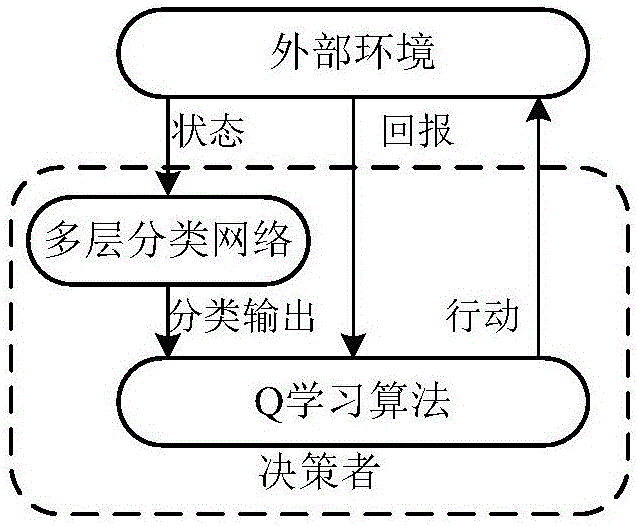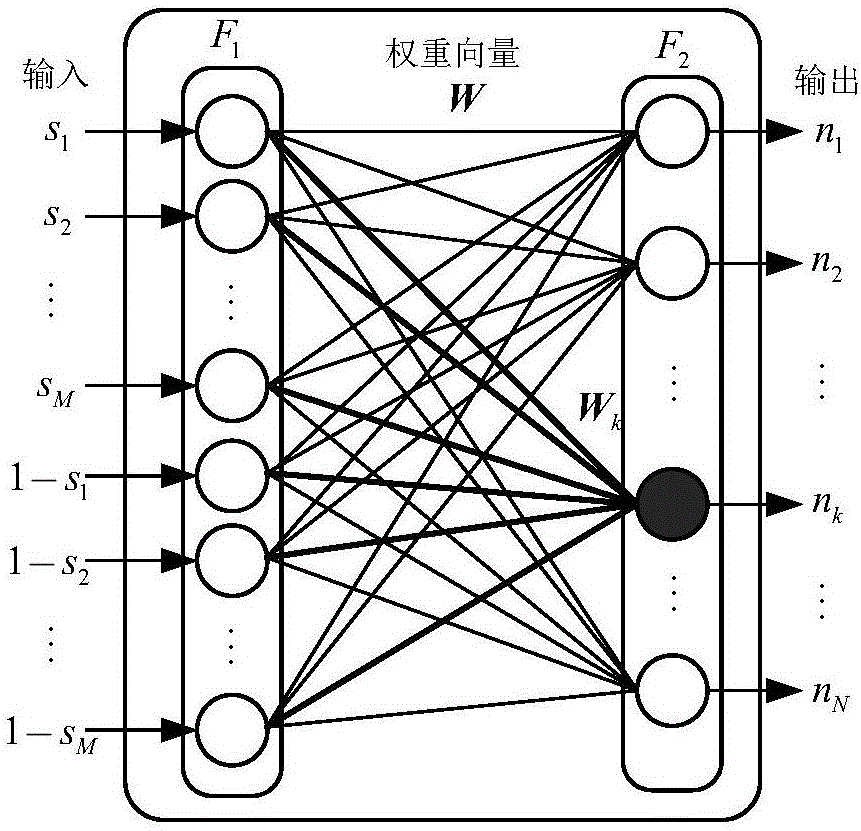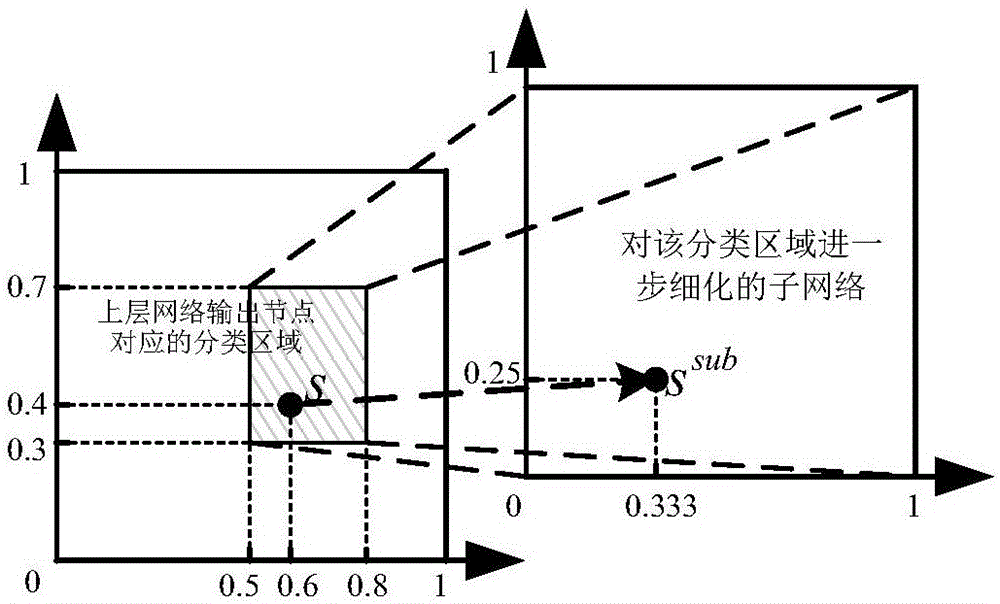Q function adaptive learning method based on multilayer classification network
A technology of self-adaptive learning and classification network, applied in the field of intelligent decision-making, it can solve the problems of manual setting, low state space dimension, and reduced decision-making quality, etc., and achieves the effect of strong performance and good Q-value fitting function.
- Summary
- Abstract
- Description
- Claims
- Application Information
AI Technical Summary
Problems solved by technology
Method used
Image
Examples
Embodiment Construction
[0021] The present invention will be further described in detail with reference to the accompanying drawings and embodiments.
[0022] The multi-layer classification network based on fuzzy adaptive resonance theory includes two modules: multi-layer classification network module and Q-learning module. The two need to work together, as in figure 1 shown. In this structure, a multi-layer classification network module inputs the state and uses an adaptive classification function to classify the input. This process is equivalent to dividing the state space into regions, and the states in each region have similar characteristics. The Q learning module calculates the Q value according to the partition of the state space by the multi-layer classification network, and calculates the best action strategy according to the Q value. This process is repeated until the Q learning module obtains a fitting Q function with a stable value.
[0023] The technical scheme of the invention inclu...
PUM
 Login to View More
Login to View More Abstract
Description
Claims
Application Information
 Login to View More
Login to View More - R&D
- Intellectual Property
- Life Sciences
- Materials
- Tech Scout
- Unparalleled Data Quality
- Higher Quality Content
- 60% Fewer Hallucinations
Browse by: Latest US Patents, China's latest patents, Technical Efficacy Thesaurus, Application Domain, Technology Topic, Popular Technical Reports.
© 2025 PatSnap. All rights reserved.Legal|Privacy policy|Modern Slavery Act Transparency Statement|Sitemap|About US| Contact US: help@patsnap.com



